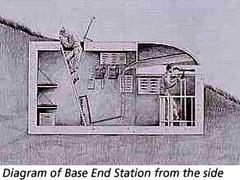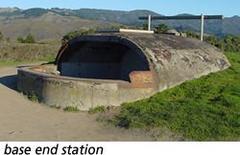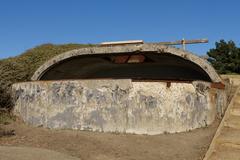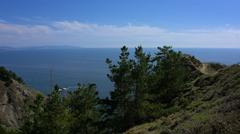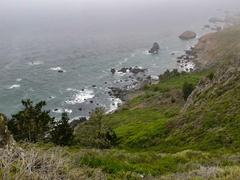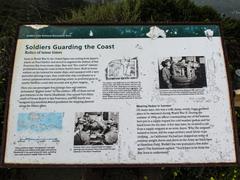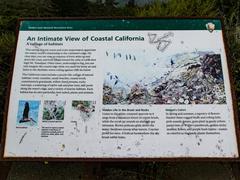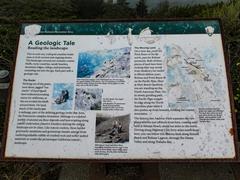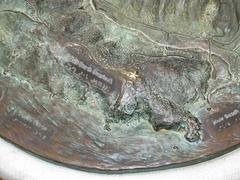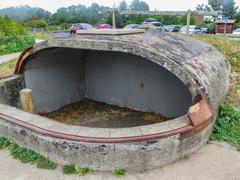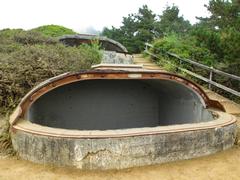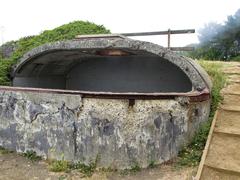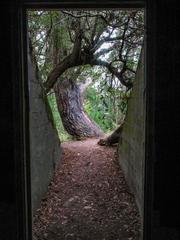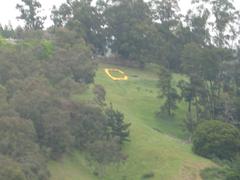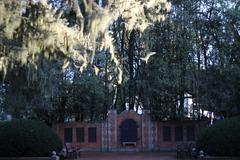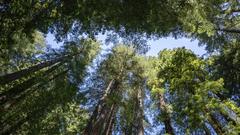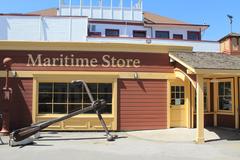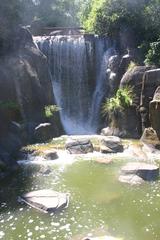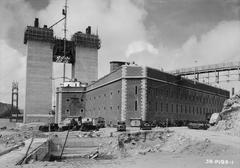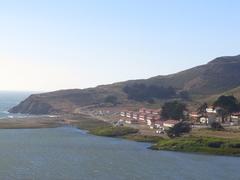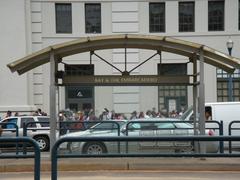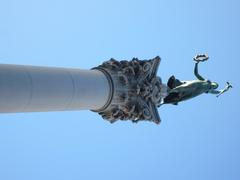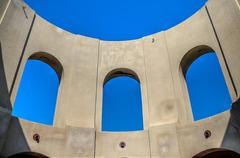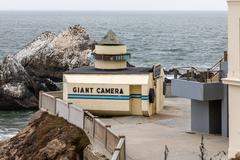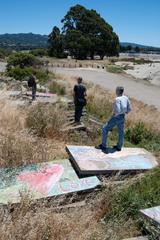
Visiting Muir Beach Overlook: Hours, Tickets, and Travel Tips
Date: 18/07/2024
Introduction
Muir Beach Overlook, situated in Marin County, California, is a captivating destination that offers a blend of historical significance, natural beauty, and recreational opportunities. Located approximately 20 miles north of San Francisco, this scenic spot provides panoramic views of the Pacific Ocean and the rugged Northern California coastline. From its indigenous roots with the Coast Miwok people to its strategic military importance during World War II, Muir Beach Overlook is rich in history and cultural heritage. Today, it is part of the Golden Gate National Recreation Area, ensuring its preservation for future generations. Visitors can explore well-maintained trails, partake in whale watching, and delve into the area’s historical and ecological narratives (National Park Service, Golden Gate National Parks Conservancy). Whether you’re a local or a tourist, Muir Beach Overlook promises a memorable experience through its breathtaking views, diverse flora and fauna, and rich historical context.
Table of Contents
- Introduction
- Explore the Rich History and Scenic Beauty of Muir Beach Overlook
- Early Inhabitants and Indigenous History
- European Exploration and Settlement
- Military Significance During World War II
- Conservation and Establishment as a Public Park
- Cultural and Ecological Significance
- Modern-Day Significance and Visitor Experience
- Visitor Information
- Travel Tips
- Nearby Attractions
- Accessibility
- Special Events and Guided Tours
- FAQ
- Conclusion
Explore the Rich History and Scenic Beauty of Muir Beach Overlook
Early Inhabitants and Indigenous History
Muir Beach Overlook holds a rich history that dates back thousands of years. The area was originally inhabited by the Coast Miwok people, who lived in the region for over 10,000 years. The Coast Miwok were skilled hunters, gatherers, and fishers, utilizing the abundant natural resources of the coastal environment. They established numerous villages along the coast, including near what is now Muir Beach Overlook. The Coast Miwok culture was deeply connected to the land, and their presence is still felt through archaeological sites and cultural artifacts found in the area (National Park Service).
European Exploration and Settlement
The arrival of European explorers in the 16th century marked a significant turning point in the history of Muir Beach Overlook. Spanish explorers, including Sir Francis Drake, are believed to have landed along the California coast in the late 1500s. The Spanish colonization efforts in the 18th century led to the establishment of missions and the displacement of the indigenous Coast Miwok people. The land that encompasses Muir Beach Overlook eventually became part of the Rancho Sausalito land grant, awarded to William Richardson in 1838 (California State Parks).
Military Significance During World War II
Muir Beach Overlook gained strategic importance during World War II. The U.S. military recognized the need to protect the West Coast from potential enemy attacks, leading to the establishment of coastal defense installations. In 1942, the U.S. Army constructed a series of observation posts and gun emplacements along the California coast, including at Muir Beach Overlook. These installations were part of the broader Harbor Defenses of San Francisco, designed to detect and deter enemy submarines and ships. The remnants of these military structures can still be seen today, serving as a reminder of the area’s wartime significance (Golden Gate National Parks Conservancy).
Conservation and Establishment as a Public Park
The post-war period saw a shift in the use and management of Muir Beach Overlook. In the 1960s, the land was acquired by the National Park Service as part of the Golden Gate National Recreation Area (GGNRA). This acquisition was part of a broader effort to preserve and protect the natural and cultural resources of the San Francisco Bay Area. The establishment of the GGNRA in 1972 marked a significant milestone in the conservation of Muir Beach Overlook, ensuring its protection for future generations. The area was developed with visitor facilities, including trails, interpretive signs, and viewing platforms, allowing the public to enjoy its scenic beauty and historical significance (National Park Service).
Cultural and Ecological Significance
Muir Beach Overlook is not only historically significant but also culturally and ecologically important. The area is named after John Muir, the renowned naturalist and conservationist who played a pivotal role in the establishment of national parks in the United States. Muir’s legacy is honored through the preservation of natural landscapes like Muir Beach Overlook, which provides habitat for a diverse array of plant and animal species. The coastal bluffs and marine environment support a variety of wildlife, including migratory birds, marine mammals, and native vegetation. The overlook offers stunning views of the Pacific Ocean, providing visitors with a unique opportunity to connect with nature and appreciate the area’s ecological richness (John Muir National Historic Site).
Modern-Day Significance and Visitor Experience
Today, Muir Beach Overlook is a popular destination for both locals and tourists seeking to explore the natural beauty and historical significance of the California coast. The overlook offers panoramic views of the Pacific Ocean, the Marin Headlands, and the rugged coastline. Visitors can explore the well-maintained trails, which provide access to scenic viewpoints and interpretive exhibits that highlight the area’s history and natural features. The site is also a prime location for whale watching, particularly during the migration seasons of gray whales and humpback whales. The combination of historical remnants, natural beauty, and recreational opportunities makes Muir Beach Overlook a cherished destination within the Golden Gate National Recreation Area (Golden Gate National Parks Conservancy).
Visitor Information
- Visiting Hours: Muir Beach Overlook is open daily from sunrise to sunset.
- Tickets: There is no entrance fee to visit Muir Beach Overlook.
- Best Times to Visit: The best times to visit are during the spring and fall when the weather is mild and the views are spectacular.
Travel Tips
- How to Get There: Muir Beach Overlook is accessible via Highway 1, approximately 20 miles north of San Francisco. It is best reached by car.
- Parking Information: There is a parking lot available at the site, but it can fill up quickly during peak times.
- Nearby Accommodations: Consider staying in nearby towns such as Mill Valley or Sausalito, which offer a range of lodging options.
- Dining Options: There are no dining facilities at Muir Beach Overlook, so plan to bring your own food or visit nearby restaurants in Muir Beach or Stinson Beach.
Nearby Attractions
- Muir Woods National Monument: Famous for its old-growth redwood trees.
- Stinson Beach: A beautiful sandy beach ideal for swimming and picnicking.
- Point Reyes National Seashore: Offers hiking trails, wildlife viewing, and stunning coastal views.
Accessibility
- Accessibility Information: The overlook features accessible pathways and viewing platforms. However, some trails may be challenging for visitors with mobility impairments.
Special Events and Guided Tours
- Special Events: Check the Golden Gate National Recreation Area website for information on special events and seasonal activities.
- Guided Tours: Guided tours are available and provide in-depth information about the history and natural features of Muir Beach Overlook.
FAQ
- What are the visiting hours for Muir Beach Overlook? Muir Beach Overlook is open daily from sunrise to sunset.
- How much does it cost to visit Muir Beach Overlook? There is no entrance fee to visit Muir Beach Overlook.
- Is Muir Beach Overlook accessible for visitors with disabilities? Yes, the overlook has accessible pathways and viewing platforms, though some trails may be challenging.
Conclusion
Muir Beach Overlook stands as a testament to the intricate tapestry of history, culture, and natural beauty that defines the California coastline. From its early days as a home to the Coast Miwok people to its role in military defense during World War II, the site encapsulates a rich historical narrative. Today, as part of the Golden Gate National Recreation Area, it offers visitors an opportunity to connect with nature, history, and each other. With its accessible pathways, diverse wildlife, and educational programs, Muir Beach Overlook is more than just a scenic viewpoint—it is a cherished destination that continues to inspire and educate. As you plan your visit, remember to respect the natural environment, stay informed through reliable sources, and take advantage of the myriad experiences this iconic location has to offer (National Park Service, Golden Gate National Parks Conservancy).
References
- National Park Service, n.d., https://www.nps.gov/goga/planyourvisit/muirbeach.htm
- Golden Gate National Parks Conservancy, n.d., https://www.parksconservancy.org/park/muir-beach-overlook
- California State Parks, n.d., https://www.parks.ca.gov/?page_id=471
- John Muir National Historic Site, n.d., https://www.nps.gov/jomu/index.htm
